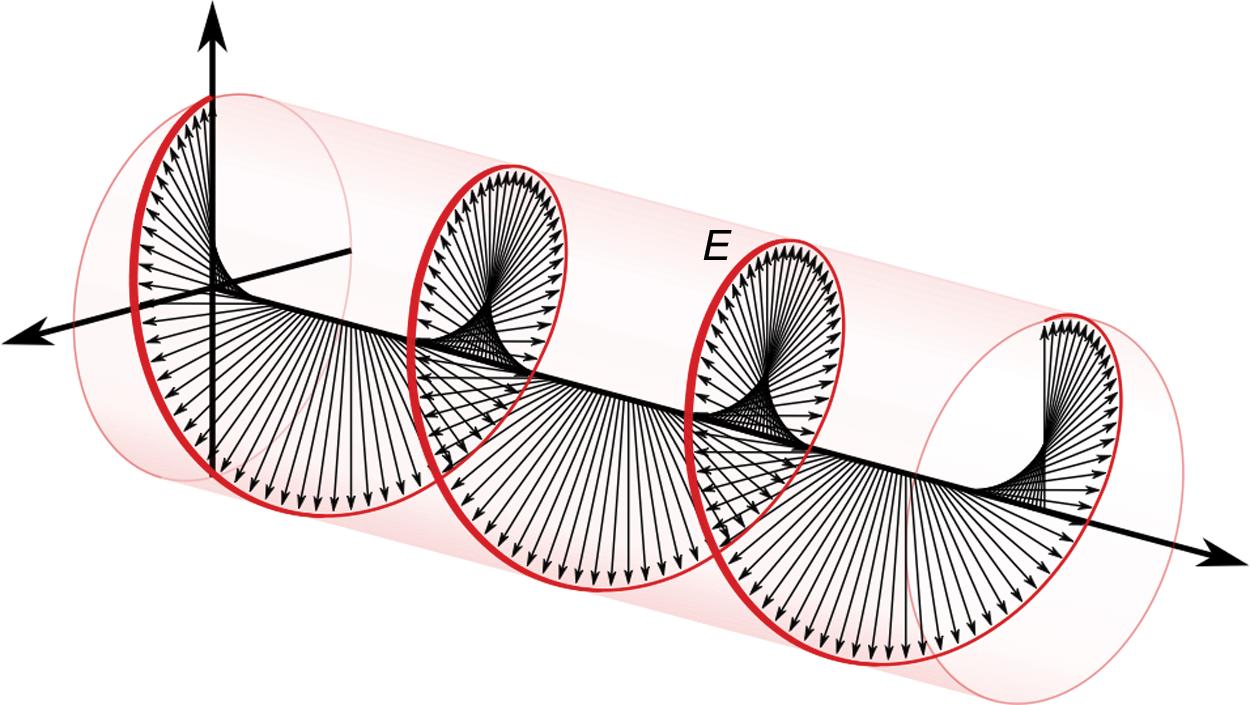
After Chapter 8.4, you will be able to:
Plane-polarized (or linearly polarized) light is light in which the electric fields of all the waves are oriented in the same direction (that is, their electric field vectors are parallel). It follows that their magnetic fields vectors are also parallel, but convention dictates that the plane of the electric field identifies the plane of polarization. Unpolarized light has a random orientation of its electric field vectors; sunlight and light emitted from a light bulb are prime examples. One of the most common applications of plane-polarized light on the MCAT is in the classification of stereoisomers, as discussed in Chapter 2 of MCAT Organic Chemistry Review. The optical activity of a compound, due to the presence of chiral centers, causes plane-polarized light to rotate clockwise or counterclockwise by a given number of degrees relative to its concentration (its specific rotation). Remember that enantiomers, as nonsuperimposable mirror images, will have opposite specific rotations.
Plane-polarized light is used to diagnose a number of diseases. Amyloidosis, caused by the buildup of various forms of misfolded proteins, is diagnosed by biopsy and staining the tissue with Congo red stain; a bright “apple green” color is seen under plane-polarized light. Gout (the precipitation of monosodium urate crystals) and pseudogout (the precipitation of calcium pyrophosphate crystals) are differentiated by their precipitate colors under polarized light: monosodium urate appears yellow and calcium pyrophosphate appears blue when the axis of the crystal is aligned with a polarizer.
There are filters called polarizers, often used in cameras and sunglasses, which allow only light with an electric field pointing in a particular direction to pass through. If one passes a beam of light through a polarizer, it will only let through that portion of the light parallel to the axis of the polarizer. If a second polarizer is then held up to the first, the angle between the polarizers’ axes will determine how much light passes through. When the polarizers are aligned, all the light that passes through the first polarizer also passes through the second. When the second polarizer is turned so that its axis is perpendicular, no light gets through at all.
The electric fields of unpolarized light waves exist in all three dimensions: the direction of the wave’s propagation is surrounded by electric fields in every plane perpendicular to that direction. Polarizing light limits the electric field’s oscillation to only two dimensions.
Circular polarization is a rarely seen natural phenomenon that results from the interaction of light with certain pigments or highly specialized filters. Circularly polarized light has a uniform amplitude but a continuously changing direction, which causes a helical orientation in the propagating wave, as shown in Figure 8.20. The helix has average electrical field vectors and magnetic field vectors that lie perpendicular to one another, like other waves, with maxima that fall on the outer border of the helix.
